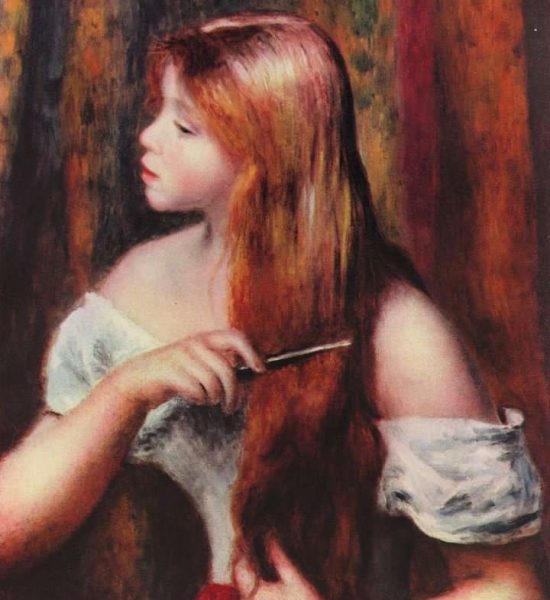
She finds beauty in everything around her: the way the snow on the morning rooftops blends with the sky after a snowstorm, the way the pine needles smell after she rips them off, or the way her professor rambles passionately about the romances of language. She admires the woman being comfortable with her hips, the man wearing a dress and heels, the girl with purple hair and a cigarette between her lips. “The world is a wonderful, beautiful place,” she says as she takes it all in.
But then she goes home and sees the world crumble around her. There are enough tears to fill the Nile and she lets them fall. She looks prettier when she cries: the way her cheeks turn red and her nose tints, as if she buried herself in the snow moments ago. She sees herself and finds all the flaws of the beautiful people in her own existence; she has wrapped herself in them. She hears a voice telling her to love herself.
“Delusion,” she whispers. “I wish I had her hair, his muscles, their hands.”
“No … you’re beautiful,” the voice tells her.
“But how? I can’t see it. Why can’t I see beauty in me?” she questions.
She stares into her own eyes and sees a familiar stranger. She washes her face in a desperate attempt to conceal how she truly feels. She looks one last time and off she goes to find the beauty she’s looking for—the beauty right in front of her. She doesn’t realize the beauty that she sees in everything around her is her beauty; it’s the reflection of herself. Perhaps one day she’ll find it, perhaps not. But what I do know is that she’ll help others see the beauty around them—secretly hoping they will see the beauty in her the way she sees it in them.
YOSHITA SAHDEV is a second-year student at York University. She’s been experimenting with writing since middle school and also loves to read. She particularly likes reading memoirs and writing song lyrics. She hopes to publish her own book someday.
You can learn more about her on Instagram